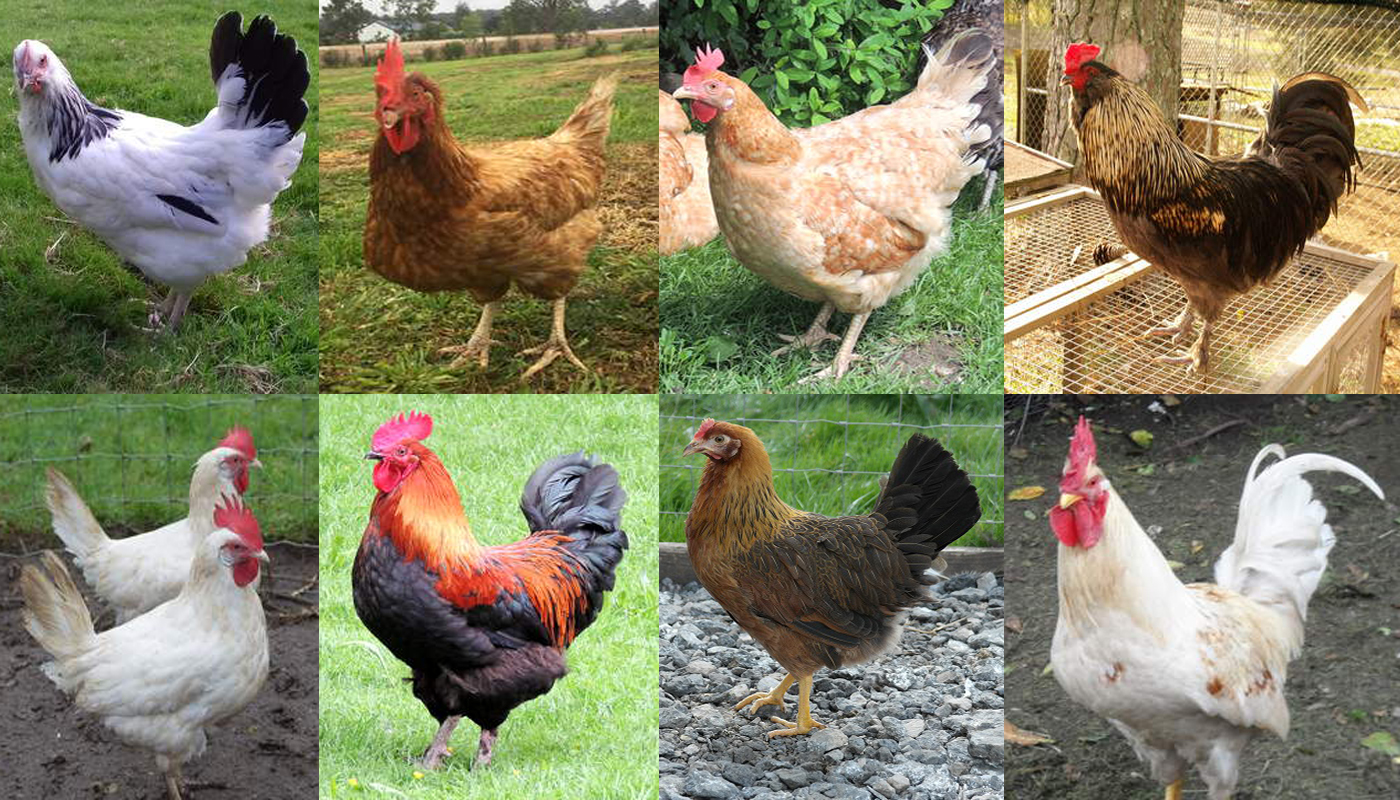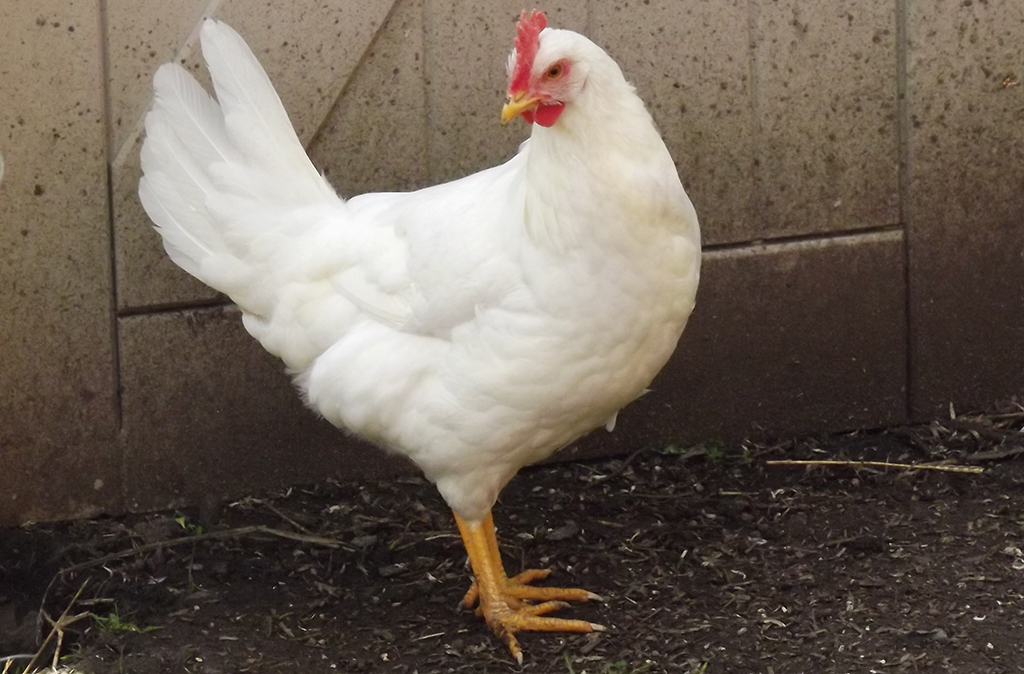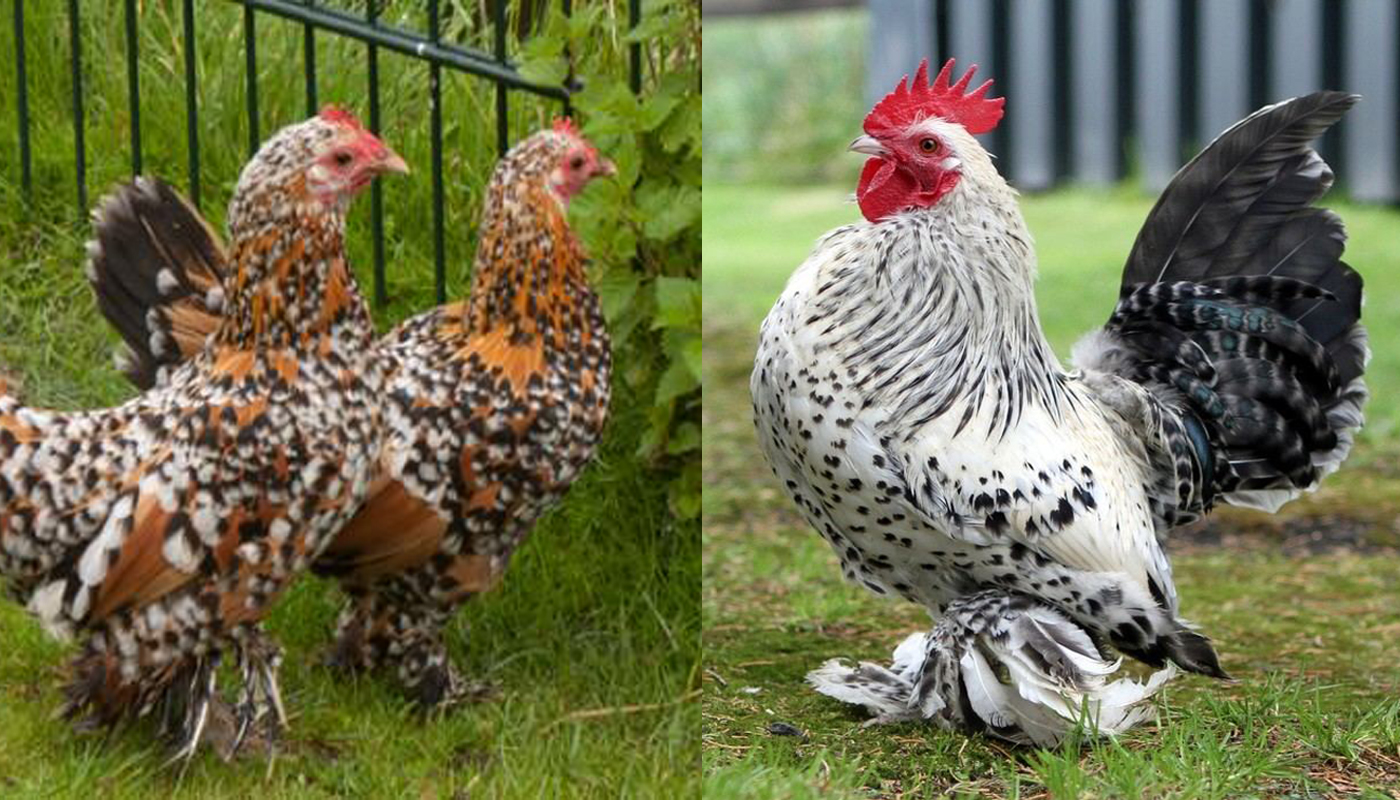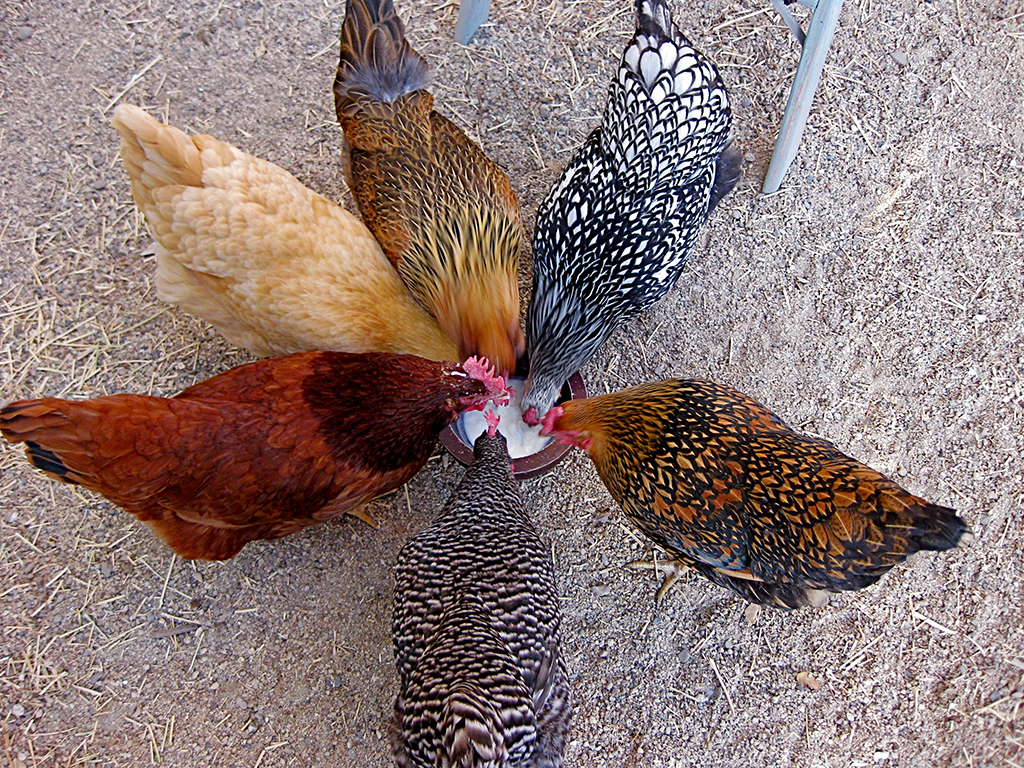
The Dorking is named after Dorking, a town in England where the birds that were said to have been brought to England by the Ancient Romans came to resemble the chickens they are today.
These birds were valued for their egg production and their tender white meat which made them hard to buy at one stage in their history.
| Country of Origin: | United Kingdom |
| American Poultry Association: | Recognized as a breed of chicken in the United States |
| Chicken Category: | Large Breed |
| Chicken Class: | English |
| Bantam Variety Available? | Yes – Single Comb Clean Legged Bantam Classification |
| Related | TOP 10 BANTAM CHICKEN BREEDS FOR BEGINNERS |
| Good Starter Chicken? | They are a versatile low maintenance chicken with a nature that makes them perfect as a starter chicken. |
| Related | 10 BEST STARTER CHICKENS FOR THE FIRST TIME POULTRY KEEPER |
PURPOSE⇒ |
Eggs: They are quite good egg layers.
They lay large white eggs from 120 – 170 per year They will lay consistently throughout winter and summer They start to lay eggs from around 20 weeks old.
Meat: They have tender white meat making them a prized table bird
Breeding: They can be bred and they hens do get broody
If you are breeding the Dorking for show choosing the correct hens and rooster bloodline is crucial. As they are on the conservation watch list they are not recommended for the novice breeder.
Foraging: They love to scratch and forage about. They do not mind confinement but would rather not be.
Show Bird: Their beautiful plumage and regal bearing give them a stately air defining their ancient heritage which makes them excellent show birds.
Pets: They make excellent pets that like to stay close to their home and family
Other: They do like to forage and roam about as long as it is not too far from their coop.
|
| Flyers? | They can fly but are not flighty |
| Noisy Birds? | They can be noisy |
| Interaction with other chickens: | They get along well with other breeds although roosters can get a bit protective over his hens. As with any flock if you are introducing new birds it is best to slowly socialize them with the flock. |
| Good with kids? | Their nurturing friendly nature makes them good with supervised kids. |
| Related | 10 ROOSTER BREEDS THAT DO NOT MIND CHILDREN |
HISTORY
The Dorking chicken breed is said to be one of the oldest breeds in England and is believed to have been brought to Britain by the Romans in the first century AD. That said some believe that the Romans may have found the hens to already be in Britain upon their arrival. Columella, a Roman writer during that century wrote of five-toed hens of which the Dorking is said to have derived from. These hens he wrote of were apparently great breeding stock and most generous of hens.
The Dorking is named after a town called Dorking in Surrey, south-east England. The chickens were sent from the market town to the larger markets in London to be sold.
Once the principal meat bird that supplied London for decades until it was replaced in the early 20th century by the Sussex breed of chicken.
In its time the Dorking became a popular show bird in the UK making its first show appearance at the London Zoo, which held one of the first poultry shows, in 1845.
In 1865 the Dorking was published in the British Standard of Excellence in Exhibition Poultry by the original Poultry Club of Britain.
The Dorking breed of poultry was admitted to the Standard of Perfection by the American Poultry Society in 1875. The first or this breed to be admitted in that year were of the silver-grey and white varieties. The red Dorking variety was added to the APA in 1995 and the three Bantam varieties in 1960.
CHARACTERISTICS |
|
|---|---|
IDENTIFICATION⇒ |
Appearance/Body: Dorking carries their rectangular shaped body in a very stately manner. These are true gentlemen and ladies of poultry. They have a many-pointed red single comb with the white variety sporting a rose comb, wattles and earlobes. They have five toes and clean yellow legs.
Color(s) White, Silver-Gray and Red
Comb: The white has a pea comb and the silver-gray and reds have a single comb.
Ave. Weight: Pullet/Hen 5 – 7 lbs.
Cockerel/Rooster 7 – 8 lbs. |
| Life Expectancy: | The average lifespan is 8 – 10 years |
| Health: | They have no known health issues and are quite a hardy bird. |
| You may Also Like: | HOW TO TELL IS A CHICKEN IS SICK |
| Temperament: | Calm, nurturing, friendly and regal birds. |
| Socialize Behavior? | They get along well with all other animals |
| You may Also Like: | HOW TO SOCIALIZING YOUR NEW CHICKENS |
| Known predators: | Most domestic animals leave them alone, but it is always best to keep an eye on dogs and cats. If hawks and or foxes are in your area it is always best to take precautions. Check with local animal shelters, zoos, vets, animal control and or pet stores about common predators in your area. |
| Conservation Status: | These birds conservation status is recorded as “watch”. It is best to check on any special license or instructions that may be set up for owning these birds. This can be checked with your local or national conservation centers. |
IDEAL ENVIRONMENT |
|
|---|---|
| Garden Size: | They adapt well to most sized gardens and take confinement well. They do like to free range and forage about to stretch their legs although they like to remain close to home. |
| Ideal Climate: | They are very hardy birds that handle the cold very well they do not mind the heat but precaution should be taken in extreme heat. |
| Ideal Coop: | The rule of thumb for any coop is 50 cm x 50 cm per hen/rooster in the coop. Ensure there is a good space for the nesting boxes and nightly roosting rails at least 1.5 inches wide. Good ventilation for air but not too drafty especially in winter. It is always a good idea to raise the coop off the ground to give the birds a dry place to roost and lay especially in wet weather. |
| Ideal Coop Run: | They can and will fly if necessary completely covering the coop run is advisable in order to give the birds a safe secure environment. |
| Ideal Flock Size: | They are quite happy in any size flock as long as they have one or two companions to wander around the run/garden with. |
| Special Instructions: | Other than their conservancy listing they do not require any special attention. |
| Accessories: | The following accessories are ideal for your coop: Nesting boxes Straw for the boxes and roosting area Roosting rails Perches Water troughs/bowls Food bowls/feeders Heating lamp(s) Animal carrier for transport purposes |
| You may Also Like: | 45 FREE DIY CHICKEN COOP PLANS, TUTORIALS AND DESIGNS |
WHERE TO FIND THESE BIRDS TO ADD TO YOUR FLOCK
These birds are quite rare in America although they may be found at some live poultry outlets and farms, or internet dealers such as Purely Poultry it is best to check with the Dorking Breeders Club. Breeders clubs and the Livestock Conservancy will be able to help you find registered breeders with prime stock. They will also be able to help with any special requirements, attention or care they may need. If you plan on breeding your chickens, you will want to make sure that they are from a good bloodline.
CARING FOR THE BIRD(S)
Please click here for our full guide to “Taking care of chickens”. This is a comprehensive guide to owning chickens. It covers where to start from choosing your ideal flock, the coop that would best suit your garden, your bird and you to buying and bringing your bird(s) home.
GENERAL
Except for their conservation status, they are a low maintenance bird that lends an air of culture to any flock.
GROOMING
Their wattles and comb may need to have a bit of Vaseline smeared over in the winter to stop potential frostbite in bitterly cold climates.
These chickens do love their dust bath and will love some added herbal essences mixed into the loose sand to help with pests and excess feather oils. Being a friendly bird that is not too fussed about being handled it should not be too much of a problem to regularly check them for mites, lice and various other parasites. Checking for these pests in their feathers should be done at least once a week to your chickens healthy. Being homebodies, they will lap up the attention of their owners. Always get your birds de-wormed on a regular basis especially if they are around other animals or interacting with kids.
DIET AND NUTRITION
Give your Dorking a balanced diet of chicken pellets, grains, chicken mash or grain mix from 8 weeks old and older. This should be fed to them first thing in the morning before they are let out to roam about to ensure they are getting all their nutrients.
For baby chickens, the best is always Chick Starter when they are under 8 weeks old.
Laying hens should get extra protein and calcium in their diets to ensure the quality of their eggs and to keep them in tip-top health.
Dorking is partial to being treated with table scraps in the form of vegetables and fruit. They find these scraps even better if they are served as ice-cubes on very hot days.
Feeding your chickens correctly will give your organic garden a lot of nutritious fertilizer to make your vegetables or flowers grow.
Please see our comprehensive guide to “Feeding your chickens” for more information of the different types of chicken feed for chicks, hens, laying hens, roosters, etc. and where to buy the feed and approximate cost of the feed.
SOCIALIZING THE BIRD(S)
Dorking is not too difficult a bird to eight socialize into a new flock or to accept a newcomer to their flock. The roosters can be a bit protective of their flock and the hens over their chicks. They have a very strict pecking order being from ancient bloodlines so it is imperative to mix breeds that will not upset this order with your Dorking.
Always check on how well a breed will get on with your current flock before buying them as you do not want to upset your coop or stress your current flock.
As with any newcomer to the roost, you will have to quarantine the bird for 7 – 31 days to ensure it does not have any unwanted critters or disease that could spread to your current flock.
It is advisable to socialize newcomers to the Dorking flock slowly and determine when it is right to allow them to become a permanent part of the flock.
NOTES / SPECIAL INSTRUCTIONS
As they are registered as a “watch” conservation status they may need an extra license to own or keep in your garden. For advice on what the bird’s conservation status and orders are please check with your local conservation department.
For breeders, it is imperative that you always check your bird’s bloodlines and ensure you are buying your birds from a reputed breeder/farm. In order to sell birds of such stature, they have to be recorded and documented, always check with local animal breeding organizations for these records.
These legitimate documents are also required should you wish to show your bird(s) in various poultry shows/competition showings.
For information and advice on adopting rescued animals, you can visit or contact your local animal welfare center.
Video
USEFUL LINKS
- Caring for your Chicken
- Feeding
- Health
- Socializing your Chicken
- Breeding Chicken
- Raising Chickens A-Z
- Hatching Eggs
- What is Molting
- Animal Shelter (ASPCA)
- American Veterinary Medical Association
- American Poultry Association
- American Animal Welfare Society
- American Animal Control
- American Animal Husbandry Society
References
- https://en.wikipedia.org
- https://livestockconservancy.org
- https://www.roysfarm.com
- https://www.mypetchicken.com
- https://www.backyardchickens.com
- https://www.feathersite.com/
 10 Chicken Breeds that Make the Best Starter Chickens for the First Time Poultry Keeper
10 Chicken Breeds that Make the Best Starter Chickens for the First Time Poultry Keeper Top Chicken Breeds for Free Ranging
Top Chicken Breeds for Free Ranging Booted Bantam Chicken Breed – Everything You Need to Know
Booted Bantam Chicken Breed – Everything You Need to Know Barnevelder Chicken Breed – Everything You Need to Know
Barnevelder Chicken Breed – Everything You Need to Know New Hampshire Chicken Breed – Everything You Need to Know
New Hampshire Chicken Breed – Everything You Need to Know Choosing a Chicken Breed
Choosing a Chicken Breed BEST TEMPORARY/PORTABLE CHICKEN RUNS FOR THE BACK GARDEN TO BUY
BEST TEMPORARY/PORTABLE CHICKEN RUNS FOR THE BACK GARDEN TO BUY Hamburg Chicken Breed – Everything You Need to Know
Hamburg Chicken Breed – Everything You Need to Know Settling the Flock into their New Home
Settling the Flock into their New Home 10 Chicken Breeds for the Colder Climates
10 Chicken Breeds for the Colder Climates Serama Chicken Breed – Everything You Need to Know
Serama Chicken Breed – Everything You Need to Know Top 10 Bantam Chicken Breeds for Beginners
Top 10 Bantam Chicken Breeds for Beginners